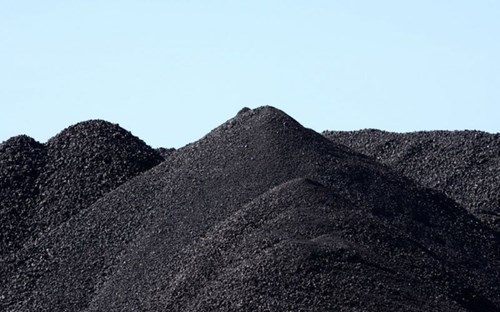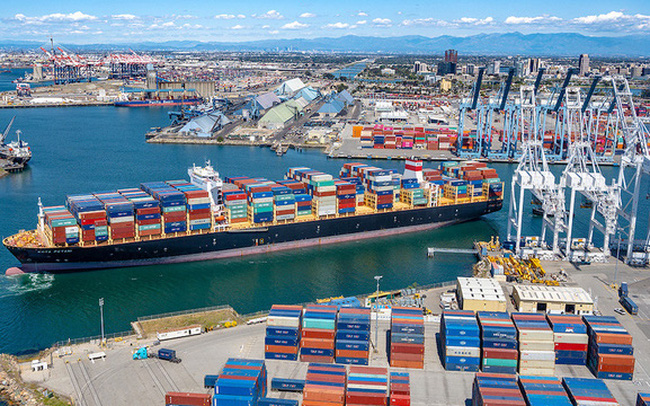Although coal is a less-loved commodity because of its high carbon footprint, Asia’s two largest economies, China and India, are still dependent on this fossil fuel. As a result, coal prices have had a spectacular 110% increase this year and are on the verge of nearing an all-time high.
China – India plunge headfirst into coal
On September 10, the standard coal price for the Asian market fell to about 177.5 USD/ton, twice higher than at the beginning of this year and sharply increased compared to the 50 USD/ton mark in the same period last year. This is the highest price in 11 years and is on the verge of being close to the all-time high seen in July 2008.
Shirley Zhang, an analyst at Wood Mackenzie, said: “What we are seeing is a dilemma for investors, financial institutions and businesses. Despite Asia’s efforts to move towards For a clean energy future, the region will still need coal for the next 10 years.”

(Artwork: AP).
From aluminum, crude oil to copper, the prices of many commodities will rebound sharply in 2021 due to strong demand and speculators rushing into the market. But even in such a bustling market, coal’s 110% rally is still outstanding.
In China and India – two countries that together account for 65% of global coal use and are also the world’s two largest coal importers, coal consumption demand is skyrocketing due to the scorching heat of the summer. Summer and economic recovery need a lot of electricity.
According to China’s National Bureau of Statistics, domestic electricity production in the first seven months of this year increased by about 13.2% year-on-year. Notably, China needs a lot more coal because the drought has caused the country’s hydroelectricity production to drop dramatically.
As a result, in July of this year alone, the billion-people economy imported 16% more coal compared to the same period in 2020, said Nikkei.
After suffering a fierce COVID-19 wave at the beginning of the year, the Indian economy has recovered, with GDP in the second quarter growing at a record pace. Demand for electricity, and of course coal, is expected to continue to grow as the pandemic subsides and the South Asian country’s rainy season ends.

Supply is tight
While demand skyrocketed, supply was scarce. Some short-term disruptions have exacerbated this year’s coal supply shortage.
Moreover, mining enterprises do not have enough incentive to invest in new mines, especially as many countries aim to gradually reduce the use of coal to combat global warming.
Analyst Nobuyuki Kuniyoshi at Jogmec Corporation (Japan) commented: “The balance of supply – demand is at risk of being disrupted because businesses are not interested in pouring capital into new coal mines”.
In fact, coal producers do not feel the need to increase output and lower prices because their market share is not easily taken by new competitors, Mr. Kuniyoshi stressed.
In addition to being the world’s largest coal consumer and importer, China is also a leading producer. However, the Beijing government has restricted coal mining activities after a series of deadly accidents in many coal mines across the country.
Not to mention, the Chinese government has also implemented reforms to clamp down on smaller mines, which are the least secure facilities. Therefore, it is difficult for domestic coal production to increase sharply despite the jump in coal prices.
China has turned to Indonesia and Russia to access international coal supplies after imposing an unofficial import ban on Australian coal. However, Indonesia, the world’s largest coal exporter, began to squeeze the volume of fossil fuel exports abroad last month as heavy rains disrupted mining operations.

Analyst Kuniyoshi further noted that in Australia, the second-largest coal exporter globally, manufacturers have significantly cut capacity and workers due to the impact of the pandemic. Moreover, they are quite cautious about scaling due to the possibility of a long-term decline in demand.
China has set a target of gradually reducing coal use from 2026 to reduce greenhouse gas emissions, meaning that its consumption will peak in 2025 and then gradually decline. President Xi Jinping also pledged to bring China’s emissions to a peak by 2030 and be carbon neutral by 2060.
India also projects that by 2030, 60% of electricity generation capacity in the country will come from green sources such as renewable energy.
T&G International Joint Stock Company
Address: 352 Hue Street, Le Dai Hanh Ward, Hai Ba Trung District, Hanoi
Hotline: 0345786803
Email: hrm@tginterjsc.com
Website: http://tginternationaljsc.com




















